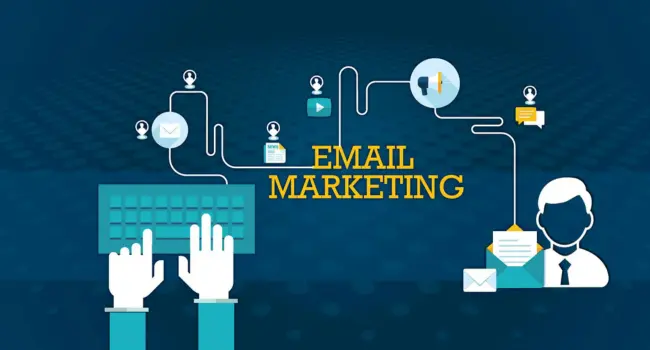Email Marketing Strategy Tips for Better Campaigns
An email marketing strategy is a smart way for planning your messages. It enables you to send communications that recipients want to open and read. This is a vital part of the digital marketing mix. Good emails can drive clients back to your website or store. A well-planned marketing effort increases trust and expands your target group. It also helps you achieve greater results. That is why many firms rely on this powerful email marketing strategy every day. Email is still one of the most effective ways to interact with people online. With proper planning, your emails can achieve amazing feats. What Is an Email Marketing Strategy? An email marketing strategy is a detailed plan for sending effective emails. It’s a marketing strategy that allows you to target the appropriate people at the right moment. The goal is campaign success. This implies more people will read your emails, click your links, and take action. A solid approach also boosts the ROI of email marketing. Businesses can make almost $36 for every $1 they spend. That’s a huge victory. You can also utilize smart email marketing strategies. These include using brief subject lines, categorizing emails by interest, and crafting straightforward communications. These tiny steps have a significant impact. Getting Started With Email Marketing Start email marketing by getting to know your customers. Use simple information, such as age or locality. Set goals, choose a good email tool, and build your list with emails that people want to receive. Define your audience To send better emails, you must first understand who you are communicating with. Start by developing a customer persona. This includes their age, hobbies, occupation, and habits. You can also send emails depending on demographics, such as location or gender. Add subscriber preferences to make your emails more personalized. People like emails that talk directly to them. In fact, 60% of readers claim to prefer this type of content. Knowing your target audience allows you to send emails that earn more opens, clicks, and results. Understanding your audience makes it easier to produce emails that they will love and trust. Set your campaign goals Before you send emails, consider what you want them to do. Do you want to increase your email list, make more sales, or attract visitors to your website? These are your aims. To reach them, you must optimize your campaigns. That requires improving your emails over time. You should also keep track of your campaign’s performance. This demonstrates how well your emails are performing. If your open rate or click-through rate increases, it indicates that you are doing well. Clear goals help you maintain focus. They also assist you in making informed decisions that will boost your future performance. Choose the right email marketing platform A good email marketing platform simplifies your work. It allows you to design, send, and track your emails in one spot. Look for tools with straightforward design features, such as contact lists and email automation software. These programs allow you to send emails automatically. Platforms such as the Brevo email tool are excellent choices. They provide templates, segmentation, and smart tools to improve results. The right platform saves you time and provides useful data. Choose one that meets your company’s needs and budget. A good tool allows you to send better emails without having to be a technical expert. Pick the right type of email campaign There are several sorts of email marketing. Each one has a unique role. A promotional email allows you to sell products or provide discounts. Content marketing campaigns provide advice, tales, and news. They help people understand and trust you. Transactional emails include receipts, order updates, and password changes. Every type is useful. For example, welcome emails are opened approximately 64% of the time. This indicates that people want to read them. Select the appropriate kind for your message. When you select the correct email type, your campaign will perform better and appear more helpful to the reader. Build and grow your email list To build your email list, invite others to sign up. Include email signup forms on your website or blog. Offer them something in exchange, such as a free guide or coupon. This is known as a lead magnet. People enjoy receiving value. It makes people more likely to provide their email address. Nonprofits also employ popups to increase signups. However, many people neglect to clear out their old email addresses. Only 35% of disengaged users are removed. That is critical for keeping your list healthy. Continue to build your list with care. A strong list allows your email marketing to perform even better over time. Design Emails People Want to Read Create emails with clean subject lines and concise content. Use eye-catching CTAs and ensure that emails are mobile-friendly. Make it more entertaining by including images or customer anecdotes. Write subject lines that get clicks Your subject line is the first thing that people see. Think of it as a headline. It should draw attention quickly. Effective subject lines encourage people to open your email. Adding a person’s name can also assist. It gives the email a more personal tone. That’s why AI subject line assistants are useful: they help you write better headlines. According to studies, personalized subject lines can increase open rates by 26%. Always take the time to write on a strong, friendly subject. A smart subject line is brief, concise, and piques people’s interest in the content of your email. Use clear and simple email copy When writing your email, make it brief and simple. Use simple words. Tell people why the email is important. Let them know what to do next. This is how to generate valuable email content. Make sure every email contains something useful. Also, distribute customized content to certain groups. This entails crafting messages that are tailored to the preferences and needs of each reader. People appreciate receiving emails that appear to be tailored just to them. So write as if you’re speaking
Email Marketing Strategy Tips for Better Campaigns Read More »


